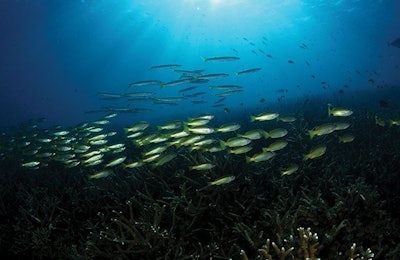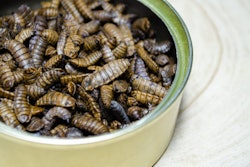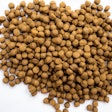
Human consumption of wild-caught fish may be more sustainable than aquaculture, research says
Human consumption of small, wild-caught fish could prove more sustainable than aquaculture, according to a University of Cambridge study. But some in the industry remain skeptical.
According to the study, salmon farmed in Scotland consumed fish oil derived from 460,000 metric tons of wild-caught fish in 2014. Yet Scotland produced just 179,000 metric tons of salmon that same year. Because 76% of the wild-caught fish were edible, the data suggest salmon farming consumed more fish than it produced, according to the researchers.
Increasing human consumption of small fish species such as anchovies and sardines could potentially improve the efficiency, and therefore sustainability, of food production, said David Willer, lead author on the paper and the Henslow Research Fellow in the University of Cambridge’s Department of Zoology.
“The conclusion would apply to other farmed fish and crustacean species such as trout and prawns,” Willer said. “For some farmed fish species such as carp, there is no need for fishmeal or fish oil in the diet, and they can grow on a purely vegetarian diet.”
While not typically as popular as farmed species like salmon, Willer said he believes wild, smaller fish like anchovies and sardines could be popularized through inclusion in recipes by celebrity chefs or at popular restaurants. Or they could be included in more familiar processed foods in the place of other meat or fish.
However, this isn’t the only option, Willer said. Reducing dependence on marine ingredients through the use of novel alternatives could also help product fisheries.
“The research article is certainly not intended to be anti-salmon production or anti-aquaculture,” Willer said. “Yes, using alternative feeds that require minimal land and freshwater usage, such as algae, are a good approach and can allow us to keep farming salmon.”
Even so, other aquaculture researchers have criticized the paper, arguing it relies on old data and outdated means of estimating the impact of fish oil production on wild fisheries.
Marine ingredient production peaked in the early 1990s and has stabilized since on account of rigorous fisheries management and decreased inclusion rates in aquafeed, according to Richard Newton, a research fellow at the institute of aquaculture at the University of Sterling.
“Also, the advances in aquaculture management, not just feed management, mean that less feed is used,” Newton said. “So, overall the amount of fish being utilized to produce salmon is lower than it ever has been.”
Newton also noted that wild-caught fish used to produce fish oil are also used to produce fish meal at the same time. When production of both ingredients is taken into account, the amount of wild fish mass used to produce marine ingredients is less than the resulting farmed fish mass. Using just fish oil to estimate the number of fish consumed by farmed salmon caused the University of Cambridge paper to overestimate, he said.
Newton agrees that human consumption of wild-caught fish could increase and, in some cases, improve efficiencies in aquafeed. However, he said he believes the potential for this is limited, and that the greatest potential for sustainability in aquaculture lies in improving overall feed efficiency.
“I think there’s some limited possibility that you can increase the amount of fish that goes to human consumption. Things like herring, for example, the fillets can be separated and go to human consumption and the byproducts go to aquaculture, and that’s a good use of the product,” he said. “But for some species, probably not. There are a lot of anchovies produced … and they’ve tried to get people to eat more and it’s not a very popular fish, so it’s not likely it’s going to go up very much.”









